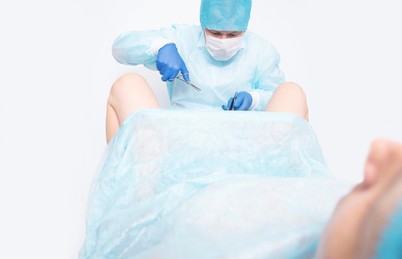
Androgen excess in women, manifesting primarily as hirsutism and, in severe cases, virilization, is a common and distressing clinical concern. The most frequent underlying cause is Polycystic Ovary Syndrome (PCOS), a complex endocrinopathy with reproductive, metabolic, and psychological implications. Understanding this spectrum of disorders requires a systematic approach, beginning with the fundamentals of sexual development and culminating in a tailored, value-based management plan.
Recognizing Normal and Abnormal Secondary Sexual Characteristics
The foundation for identifying androgen excess lies in understanding the normal timeline and presentation of puberty. Secondary sexual characteristics are physical traits that emerge during puberty but are not directly involved in reproduction. In females, these include thelarche (breast development), pubarche (growth of pubic and axillary hair), and menarche (the first menstrual period).
- Normal Variations: The timing of puberty is not universal and is significantly influenced by genetics, nutrition, and ethnicity. On average, thelarche begins between ages 8 and 13, followed by pubarche, with menarche occurring approximately two years after breast budding. There are notable racial and ethnic differences; for instance, African American and Hispanic girls tend to enter puberty earlier than their Caucasian and Asian counterparts (Herman-Giddens et al., 1997). This variation is considered normal and is crucial for avoiding the misdiagnosis of precocious puberty.
- Abnormalities: Deviations from this timeline constitute abnormalities. Precocious puberty is the onset of secondary sexual characteristics before age 8 in girls, while delayed puberty is the absence of thelarche by age 13. Pubarche, driven by adrenal androgens (adrenarche), can sometimes occur prematurely without other signs of puberty, a condition known as premature adrenarche. While often benign, it can be an early indicator of a predisposition to PCOS.
Defining Hirsutism and Virilization
Hirsutism and virilization both result from excess androgens (hyperandrogenism) but represent different points on a spectrum of severity.
- Hirsutism: This is defined as the excessive growth of thick, dark, terminal hair in a male-pattern distribution on a woman’s body. These androgen-sensitive areas include the upper lip, chin, chest, upper and lower back, lower abdomen, and inner thighs. Hirsutism is distinct from hypertrichosis, which is a generalized increase in fine, vellus hair over the entire body and is not androgen-dependent. Hirsutism is clinically quantified using the modified Ferriman-Gallwey (mFG) score, which grades hair growth in nine body areas, with a score of 8 or more typically considered indicative of hirsutism (Rosenfield, 2005).
- Virilization: This is a more severe manifestation of hyperandrogenism, characterized by the development of male physical characteristics. Signs of virilization include significant hirsutism, clitoromegaly (enlargement of the clitoris), deepening of the voice, temporal balding (male-pattern hair loss), increased muscle mass, and breast atrophy. The presence of virilization is a clinical red flag, as it suggests a very high level of androgen production, often from an androgen-secreting tumor of the ovary or adrenal gland.
Pathophysiology and Etiologies of Hirsutism
The underlying mechanism of hirsutism involves either an overproduction of androgens or an increased sensitivity of the hair follicle to normal androgen levels.
- Pathophysiology: Androgens like testosterone are converted to the more potent dihydrotestosterone (DHT) within the hair follicle by the enzyme 5-alpha-reductase. DHT binds to androgen receptors, transforming fine, light vellus hairs into coarse, dark terminal hairs. Hirsutism can therefore be caused by:
- Increased androgen production from the ovaries or adrenal glands.
- Increased peripheral sensitivity of hair follicles to androgens, often due to higher 5-alpha-reductase activity.
- Etiologies (Causes):
- Polycystic Ovary Syndrome (PCOS): This is the most common cause, accounting for over 75% of cases. PCOS is a disorder of ovarian dysfunction characterized by hyperandrogenism and oligo- or anovulation. The exact cause is unknown but involves a combination of genetic and environmental factors leading to insulin resistance and elevated Luteinizing Hormone (LH) levels, which together stimulate excess ovarian androgen production.
- Idiopathic Hirsutism: This diagnosis is made when a woman has hirsutism with regular menstrual cycles and normal serum androgen levels. It is thought to be caused by increased peripheral 5-alpha-reductase activity.
- Non-Classic Congenital Adrenal Hyperplasia (NCCAH): A genetic disorder caused by a partial deficiency of the enzyme 21-hydroxylase, leading to the shunting of precursor hormones toward adrenal androgen production. It presents similarly to PCOS and is a crucial differential diagnosis.
- Androgen-Secreting Tumors: Rare but serious causes of rapidly progressing hirsutism and virilization. These tumors can be ovarian (e.g., Sertoli-Leydig cell tumors) or adrenal (e.g., adrenal carcinoma).
- Cushing’s Syndrome: Excess cortisol production can be associated with excess production of adrenal androgens.
- Medications: Certain drugs, such as anabolic steroids, danazol, and some progestins, can cause hirsutism.
Evaluation and Initial Management of Hirsutism and Virilization
A systematic evaluation is key to identifying the underlying cause and guiding therapy, with a focus on value-based care principles that prioritize effective, safe, and cost-conscious interventions.
- Evaluation:
- History: A thorough history should focus on the onset and progression of hair growth (gradual vs. rapid), menstrual history, signs of virilization, family history (PCOS, hirsutism, diabetes), and medication use. Rapid onset and virilization warrant an urgent workup for a tumor.
- Physical Examination: Assess the mFG score to quantify hirsutism. Look for signs of virilization (clitoromegaly), insulin resistance (acanthosis nigricans), and Cushing’s syndrome (striae, central obesity).
- Laboratory Testing:
- Initial Tests: Total testosterone and DHEA-S (a specific adrenal androgen precursor).
- If Menstrual Irregularity: Add prolactin and TSH to rule out other causes of anovulation.
- Screening for NCCAH: An early morning, follicular phase 17-hydroxyprogesterone level is recommended for at-risk populations.
- Red Flag Levels: A total testosterone level >150-200 ng/dL or a DHEA-S level >700 mcg/dL should raise strong suspicion for an androgen-secreting tumor and prompt imaging of the ovaries and adrenal glands.
- Initial Management Options (Value-Based Approach):
- First-Line Medical Therapy: Combined oral contraceptives (OCPs) are the cornerstone of treatment for most women with hirsutism, especially those with PCOS. They are effective, widely available, and relatively inexpensive. OCPs work by:
- Suppressing LH, which reduces ovarian androgen production.
- Increasing Sex Hormone-Binding Globulin (SHBG), which binds and inactivates free testosterone.
- Providing contraception, which is essential if an anti-androgen drug is added.
- Second-Line Therapy (Anti-androgens): If hirsutism does not improve sufficiently after 6 months of OCP use, an anti-androgen agent like spironolactone can be added. Spironolactone directly blocks androgen receptors at the hair follicle. It is teratogenic and must be used with reliable contraception.
- Mechanical/Cosmetic Methods: These are essential for managing existing hair and providing immediate cosmetic improvement. Options include shaving, waxing, plucking, and more permanent methods like laser hair removal and electrolysis. These are often used in conjunction with medical therapy.
- Lifestyle Modifications: For patients with PCOS and obesity, weight loss through diet and exercise can reduce insulin resistance, lower androgen levels, and improve both hirsutism and menstrual function.
- First-Line Medical Therapy: Combined oral contraceptives (OCPs) are the cornerstone of treatment for most women with hirsutism, especially those with PCOS. They are effective, widely available, and relatively inexpensive. OCPs work by:
Hirsutism and Virilization in Other Medical Disorders
While most commonly associated with PCOS, hirsutism and virilization are critical signs in several other medical conditions.
- PCOS: Hirsutism is a diagnostic criterion and a primary clinical manifestation. It exists alongside metabolic dysfunction (insulin resistance, type 2 diabetes risk), reproductive issues (infertility), and psychological distress.
- Congenital Adrenal Hyperplasia (CAH): In its non-classic form, hirsutism may be the primary presenting complaint in an adolescent or young adult woman, often mimicking PCOS.
- Cushing’s Syndrome: Hirsutism is a common feature, but it is typically accompanied by other classic signs like facial plethora, proximal muscle weakness, and purple striae, which help differentiate it from PCOS.
- Androgen-Secreting Tumors: Here, hirsutism is a harbinger of a potentially malignant process. Its rapid progression and the presence of virilization are the key distinguishing features that demand an immediate and aggressive diagnostic workup.
In conclusion, hirsutism is more than a cosmetic issue; it is a significant clinical sign of underlying androgen excess, demanding a thoughtful and systematic evaluation. By understanding the nuances of pubertal development, clearly defining the clinical signs, and methodically investigating the potential causes, clinicians can differentiate benign and common conditions like PCOS from rare but life-threatening disorders. Management should be multifaceted—combining hormonal therapies, direct hair removal methods, and lifestyle changes—to effectively address both the underlying pathology and the patient’s quality of life.
References
- Herman-Giddens, M. E., Slora, E. J., Wasserman, R. C., Bourdony, C. J., Bhapkar, M. V., Koch, G. G., & Hasemeier, C. M. (1997). Secondary sexual characteristics and menses in young girls seen in office practice: a study from the Pediatric Research in Office Settings network. Pediatrics, 99(4), 505–512.
- Legro, R. S., Arslanian, S. A., Ehrmann, D. A., Hoeger, K. M., Murad, M. H., Pasquali, R., & Welt, C. K. (2013). Diagnosis and treatment of polycystic ovary syndrome: an Endocrine Society clinical practice guideline. The Journal of Clinical Endocrinology & Metabolism, 98(12), 4565–4592.
- Martin, K. A., Anderson, R. R., Chang, R. J., Ehrmann, D. A., Lobo, R. A., Murad, M. H., Pugeat, M. M., & Rosenfield, R. L. (2018). Evaluation and Treatment of Hirsutism in Premenopausal Women: An Endocrine Society Clinical Practice Guideline. The Journal of Clinical Endocrinology & Metabolism, 103(4), 1233–1257.
- Rosenfield, R. L. (2005). Hirsutism. New England Journal of Medicine, 353(24), 2578–2588.






